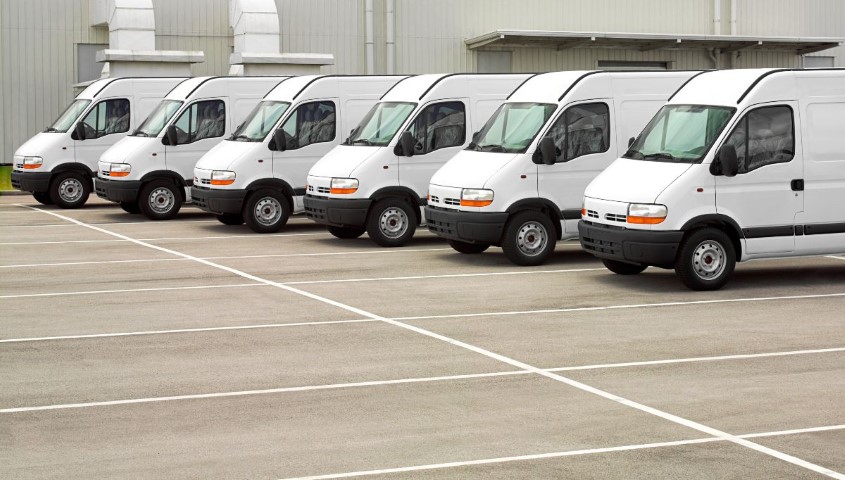 Off-road fleets are the backbone of some of the world’s most important industries. Widely used in mining, energy production and more, an off-road fleet that’s well maintained and properly equipped with the right suspension and a GVM upgrade is the key to success. But, designing the perfect off-road vehicle is a challenge, especially when you are operating in harsh outback environments. In this article we’re going to cover the basics of converting dealer vehicles to an off-road capable fleet that’s always ready for action.
Off-road fleets are the backbone of some of the world’s most important industries. Widely used in mining, energy production and more, an off-road fleet that’s well maintained and properly equipped with the right suspension and a GVM upgrade is the key to success. But, designing the perfect off-road vehicle is a challenge, especially when you are operating in harsh outback environments. In this article we’re going to cover the basics of converting dealer vehicles to an off-road capable fleet that’s always ready for action.
- Off-Road Upgrades
Travelling on unsealed roads presents one of the biggest challenges to the affordability and longevity of light fleets. Although fleet operators often invest in world-class vehicles like the Toyota Land Cruiser, consistent off-road use is a major strain on all suspension and drivetrain systems.
The first port of call for keeping an off-road fleet ready for action is to invest in serious upgrades. In most cases this means installing dedicated suspension solutions and moderate vehicle lifts. Lifting off-road vehicles increases ground clearance and ensures they are ready to handle ruts, bumps, water crossings and much worse. Making that lift safe requires an accompanying suspension solution, often in the form of gas struts and springs that are designed for fleet use. These fleet-specific solutions are built tougher than street suspension, making them suitable for heavy use in the world’s harshest environments.
- Tracking and Monitoring Equipment
Measuring the usage, cost, efficiency, and servicing needs of remote fleets is a challenge. With hundreds or thousands of vehicles to keep track of, often across large, remote locations, managing a light fleet requires dedicated solutions. Many operators choose to invest in purpose-designed tracking systems that allow for remote monitoring and reporting on all vehicles in the fleet. These tracking systems allow operators to monitor:
- How and where equipment is being used, allowing them to plan for more efficient travel, transport and scheduling
- Whether the right vehicles and resources are being allocated to each site
- Maintenance and repair schedules
- Potential vehicle theft or misuse
- Fuel consumption and operating expenses
The right tracking upgrades can dramatically reduce costs and improve the productivity of light fleets by making the right assets available at the right time.
- Develop a Servicing Plan
Downtime is a killer in industries like mining that never stop moving. While off-road fleets often rely on some of the world’s toughest vehicles, even those need servicing from time to time. And, operating in environments like the Australian outback, these vehicles often need more servicing than they would in any other industry.
Developing a dedicated fleet servicing plan is key to keeping your vehicles on the road and preventing costly disruptions. Depending on how your vehicles are used, your servicing plan should include more frequent maintenance than the manufacturer has specified. This often involves working with professionals to regularly rebuild or replace major components such as differentials and CV joints that are subject to additional strain. While these major tasks are time-consuming, harsh environments are quick to wreck critical components, and it’s better to provide preventative maintenance than to leave vehicles stranded in remote locations.
- Carrying Capacity Upgrades
Transporting workers, drivers and site equipment is no mean feat. Even the purpose-built 4WDs that are popular in Australian fleets require upgrades before they can be used on remote sites. One of the most effective ways to improve fleet performance is to invest in a GVM upgrade. GVM upgrades improve carrying capacity and handling without impacting the safety of vehicles. When performing GVM upgrades it’s essential to choose a system that increases capacity without dramatically increasing the ride height. A lower centre of gravity improves performance and comfort without exposing drivers to unnecessary risks. This is especially important for vehicles such as Toyota Landcruiser’s that already ride high on their off-road suspension.
- Work With a Light Fleet Specialist
Designing the ultimate off-road fleet requires specialist equipment, parts and expertise. Fleet operators in major industries like mining often benefit from partnering with companies that can provide the expertise and dedicated systems their vehicles need. The right light fleet specialist will have workshops in your area, and they will maintain relationships with global suppliers that allow them to source the world’s best off-road solutions. From suspension and GVM upgrades to wheels, tyres, tracking systems, radios and electronics, a light fleet specialist will handle the hard work of designing the systems and maintenance plan you need.










